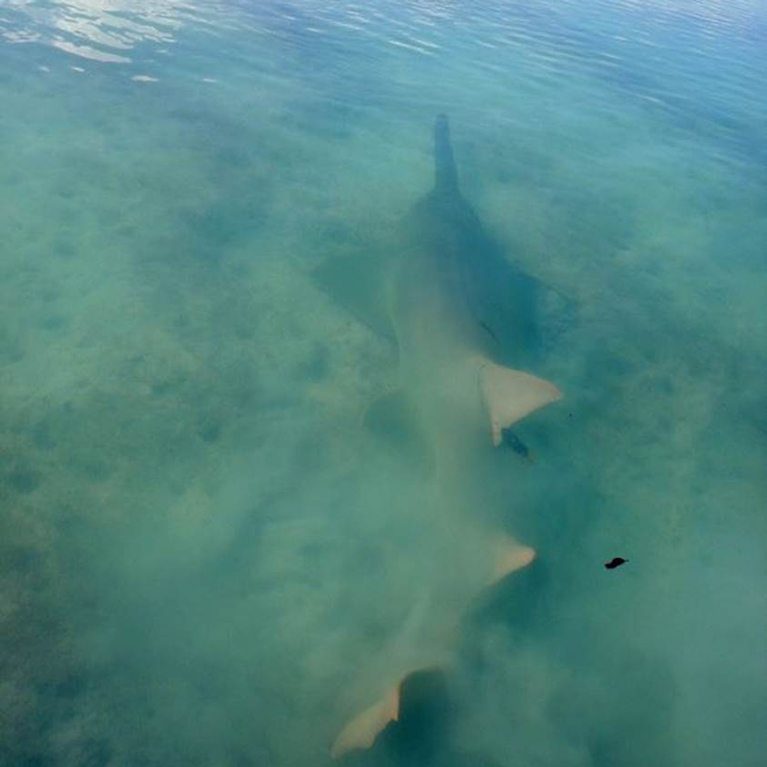Andros Island: a lifeboat for sawfishes?
Sawfishes are rapidly disappearing from our seas, so when a healthy population was discovered off Andros Island in The Bahamas, the area became a very important place. Dean aims to understand this rare community of sawfishes in order to protect them.
I am a fish ecologist with interests in the biology of exploited and poorly studied estuarine and marine taxa. Much of my research addresses specific biological gaps necessary for the management and conservation of coastal and deep-water sharks and rays, including research on endangered smalltooth sawfish. My interest in sharks stems from being raised fishing and exploring Florida’s Gulf coast. I received Bachelor’s degrees in marine science and biology from the University of Miami and a PhD in fisheries science from the College of William & Mary’s Virginia Institute of Marine Science. I was a post-doctoral researcher and faculty member...
Habitat use, residency and population genetics of endangered smalltooth sawfish off Andros Island
A key challenge to sawfish conservation and recovery is identification of existing critical habitats. Using genetic analysis in concert with satellite telemetry and acoustic monitoring, we will determine whether smalltooth sawfish in The Bahamas constitute a genetically and demographically distinct breeding population that could contribute to species recovery.
Sawfishes typify the challenge of assessing and conserving widely distributed marine fishes. Smalltooth sawfish have been extirpated from large parts of their range, suggesting that unless effective conservation measures are in place, there is a significant risk of extinction in the wild. The west side of Andros Island in The Bahamas is one of the most remote and unaltered tropical systems in the Atlantic Ocean and has recently been designated a national park, potentially protecting these pristine habitats in a country where a tourism-based economy has traditionally led to gross over-development and habitat degradation. Thus, the Andros West Side National Park could represent a 1.3 million-acre ‘lifeboat’ for smalltooth sawfish in the western Atlantic, but data are lacking on how sawfish use the park and their movements within the larger Caribbean basin. Such remote areas are exceedingly difficult to effectively monitor, however, and regulations are difficult to enforce. Data concerning movement patterns, habitat use and population genetics collected as part of this study will elucidate the ecological importance of Andros Island to the recovery of smalltooth sawfish. Following the successful designation of The Bahamas as a shark sanctuary, our work may stimulate legislation to protect sawfishes in The Bahamas.
Sawfishes are a small group of batoids possessing a long, toothed rostrum used for defence and feeding. Worldwide, there are five living species of sawfishes and together they represent the most imperilled family of elasmobranchs. Sawfishes occur in coastal tropical waters where they are captured by fisheries as their rostra are highly susceptible to entanglement in fishing gear. Sawfishes also require habitats, such as mangroves, that are highly sensitive to degradation from pollution and development.
The smalltooth sawfish Pristis pectinata is found in the Atlantic Ocean and is the only sawfish species native to the United States and the islands of the Caribbean basin. The US population of smalltooth sawfish has declined considerably and its range, which has contracted primarily as result of overfishing, is principally restricted to south-west Florida. This is likely to be the only remaining region with a reproductive population. A critical factor determining the likelihood of smalltooth sawfish recovery is the amount of genetic exchange between population segments. For example, if south-west Florida is the only remaining nursery in the US and this population is closed, then genetic bottlenecks may limit recovery. However, if there is mixing with adult sawfish from other regions, the likelihood of recovery increases.
Records of smalltooth sawfish exist throughout The Bahamas, although it is not known if the population in The Bahamas is distinct or part of the US population.
In 2010, we began a pilot study using satellite telemetry to track sawfishes in The Bahamas. We successfully tagged three large juvenile sawfish in Andros, none of which emigrated out of the area over the 60-180 days the tags were deployed. Local fishing guides continue to provide us with information about the sawfishes they see in the area, including photographic evidence of a young-of-year sawfish. The entire region where sawfishes are known to occur in Andros has recently been designated as the Andros West Side National Park, which could prove critical to the recovery of the species.
The aims and objectives of this project are to:
- Examine patterns of habitat use for smalltooth sawfish in Andros in The Bahamas across daily and seasonal time-scales.
- Determine large-scale seasonal movements within The Bahamas and potential exchange between Bahamian and United States waters.
- Examine the duration of use of smalltooth sawfish activity hotspots and determine if sawfish are philopatric to these areas, returning in subsequent years.
- Determine whether the Andros sawfish population constitutes a genetically distinct management unit from Florida sawfishes, and if so, measure local genetic diversity.
vWith the assistance of the Save Our Seas Foundation, highlight the importance of the 1.3 million-acre West Side National Park on Andros Island to the recovery of smalltooth sawfish and provide the public and Bahamian government with information relative to their status so conservation legislation may be considered.


